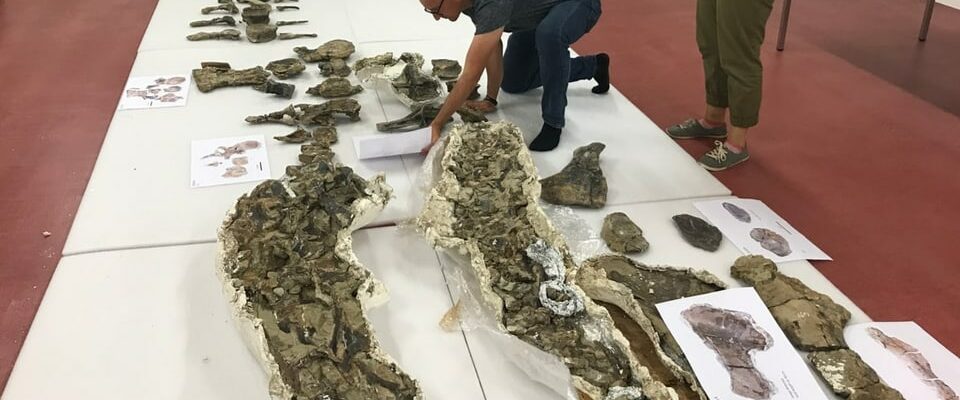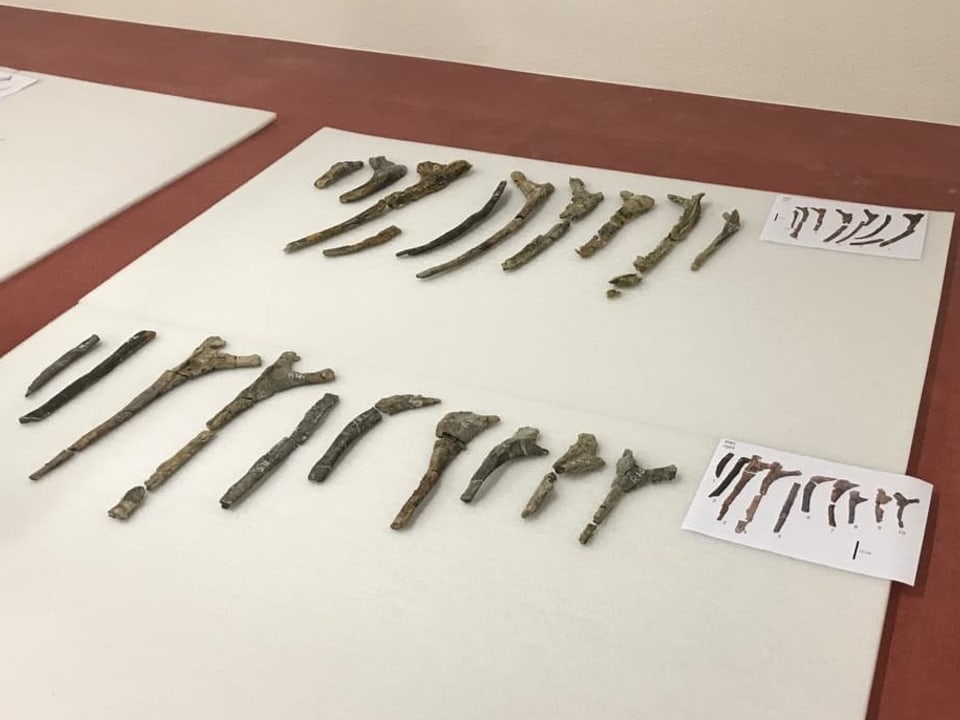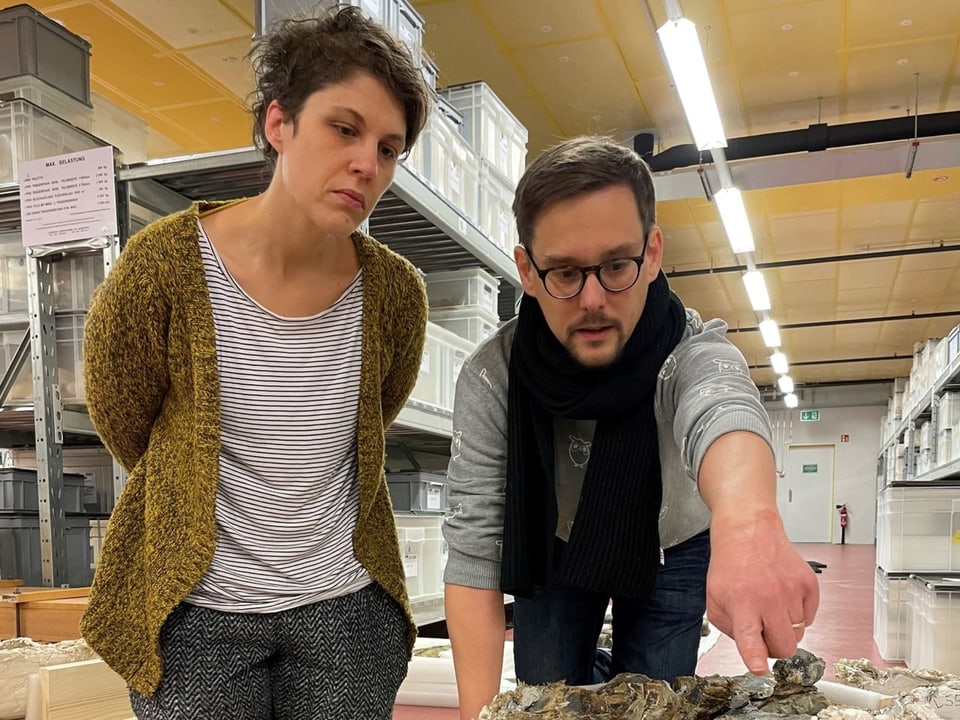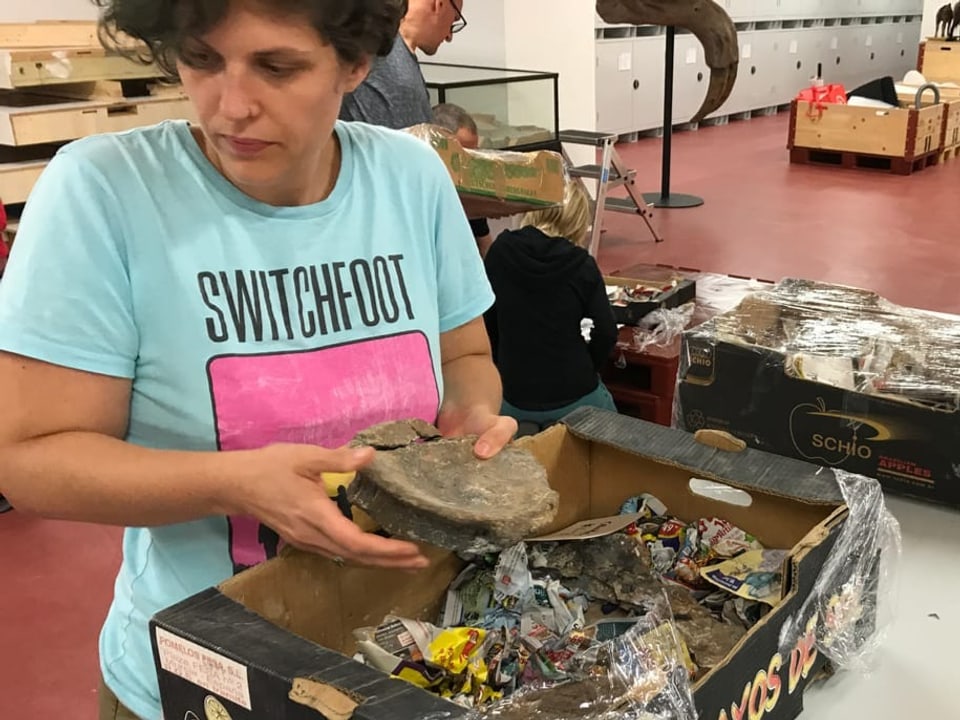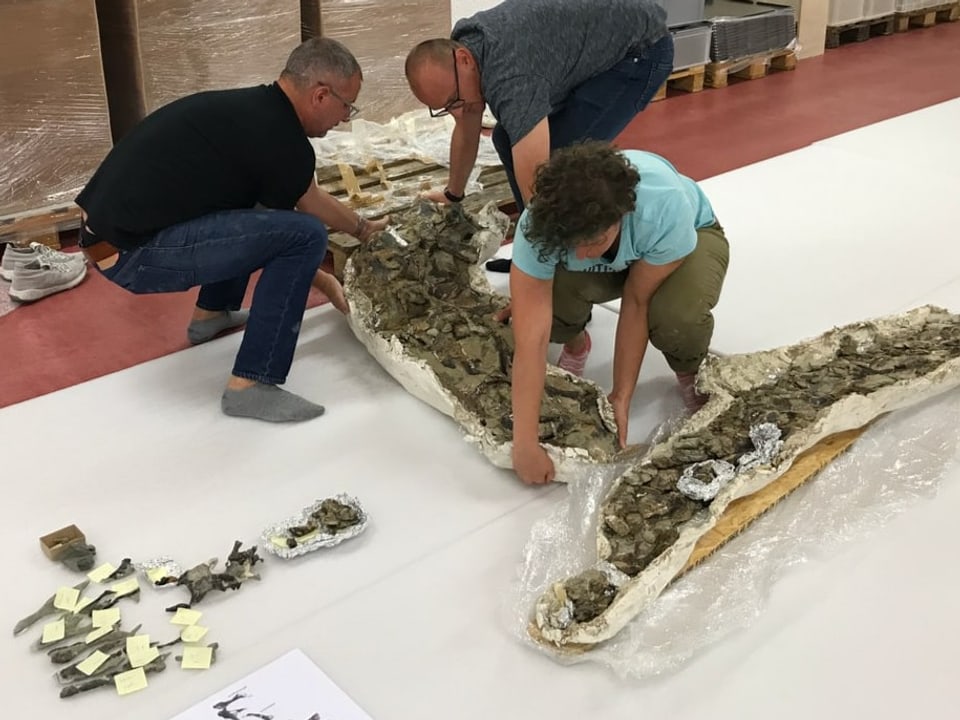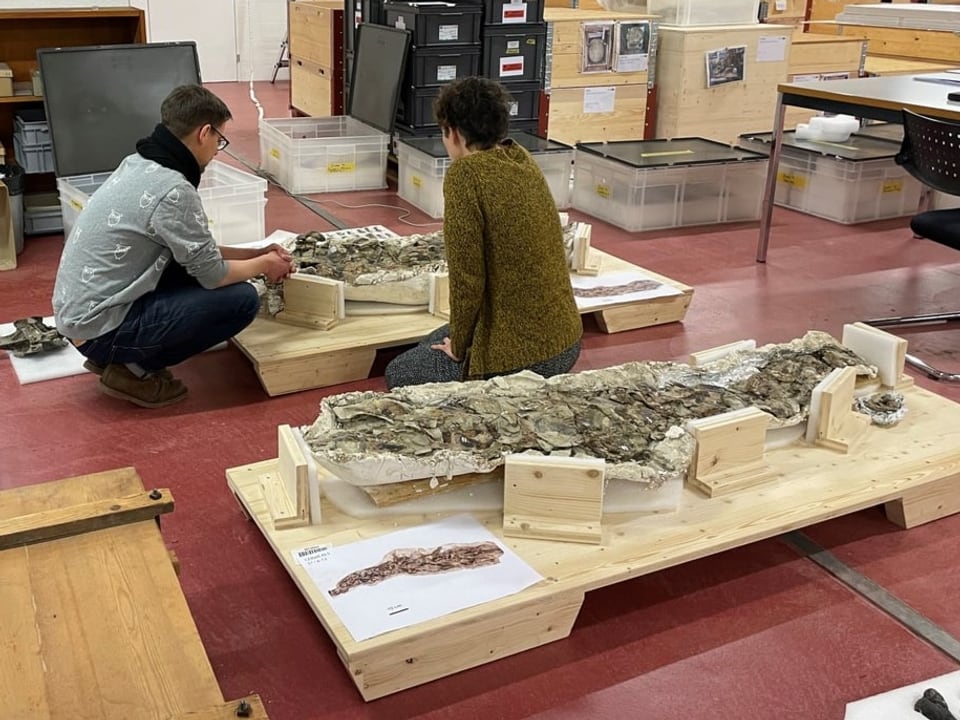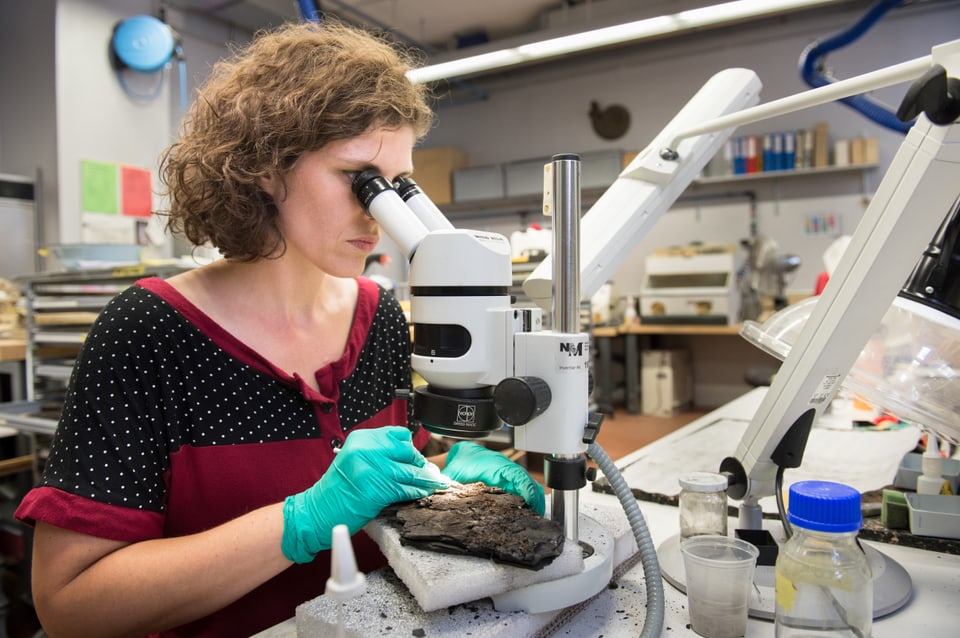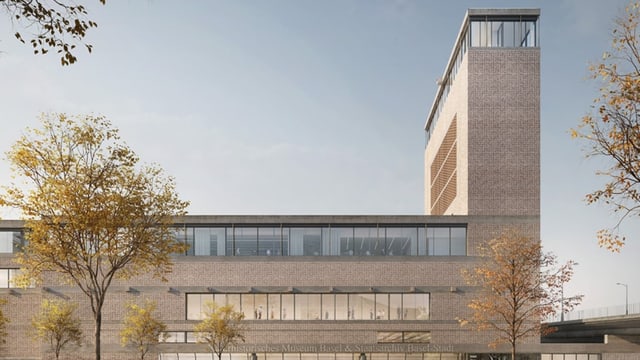Contents
A globally unique skeleton of a Diplodocus dinosaur is in Basel. It is being prepared for the Natural History Museum.
Around 150 million years ago, the Diplodocus dinosaurs also lived in Switzerland. In the case of the Jurassic Pruntrut, a whole field of fossilized footprints of Diplodocus and other dinosaurs was found on a rock slab during the construction of the Autobahn in 2002. These four-legged, long-necked herbivores were a good 25 meters long when fully grown. Some fossils of their skeleton have been found, particularly in North America, but never complete.
Legend:
Loïc Costeur, Head of Geosciences and Curator of Vertebrate Paleontology at the Natural History Museum Basel, kneels between the laid out bones of the putative Diplodocus.
zVg / NMB
The skeleton of a young animal that is currently being prepared in Basel is relatively intact at 70 to 80 percent. Therefore, this is “a sensation,” explains the expert for long-necked dinosaurs Emanuel Tschopp. The Swiss works at the University of Hamburg and has now traveled to Basel for this rare specimen to the Natural History Museum (NMB).
It has not yet been fully clarified what kind of long-necked dinosaur this individual in Basel is. There are several subspecies of the Diplodocus. The investigation is not yet complete and the scientific publication is still pending.
A very beautiful and worldwide unique skeleton.
What is special is that the neck is completely preserved here, i.e. all 15 vertebrae next to each other including the connection to the first dorsal vertebrae, explains Loïc Costeur, Head of Geosciences and Curator of Vertebrate Paleontology at the Basel Museum. No other known skeleton of this dinosaur is so completely preserved.
Pieces of the skull are also included. “All this makes a very beautiful and unique skeleton worldwide,” says Tschopp. This is precisely why it interests him as a researcher.
Scientific dino puzzle
Some of the bones were still connected in a block of stone when they arrived in Basel. According to Costeur, this is particularly revealing because it documents anatomical connections of the dinosaur body. Presumably muscle fibers are still preserved in the stone between the bones, which could be recognized during dissection.
While dinosaur skeletons can be seen in many museums, they are mostly full or partial reconstructions rather than real bones. Partially incomplete skeletons of different individuals were combined to a whole dino.
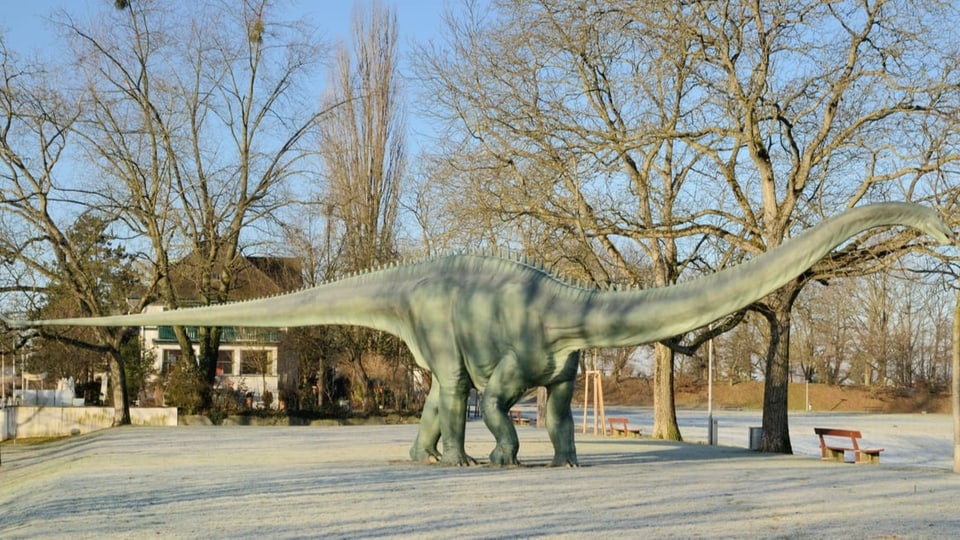
The real Diplodocus boy from the US state of Wyoming arrived packed in wooden pallets and boxes; The Basel Museum bought the rare fossil almost two years ago. The site was on private land.
All the stone pieces are currently in a rented warehouse in Münchenstein (BL). Removing the actual petrified bones from the surrounding rock is a demanding manual job for the Basel museum taxidermist Tandra Fairbanks.
Attraction for new museum building
The young dinosaur, which is around eight meters tall, will be an eye-catcher in the new building of the Natural History Museum, which is scheduled to open in 2028. That’s a sporting schedule for Fairbanks: “I wouldn’t be able to do it alone in five years.” The museum started with the preparation about a year ago.
Coincidentally, Fairbanks himself is from Idaho, near Wyoming. She grew up there with the dinosaur intoxication. She usually works with mammalian skeletons, but working with dinosaurs is a childhood dream of hers.
Dinosaur research has always been a dream job for Tschopp: “My inner child stayed with it.” So it’s not just the young museum visitors who look forward to the prepared dinosaur skeleton.
